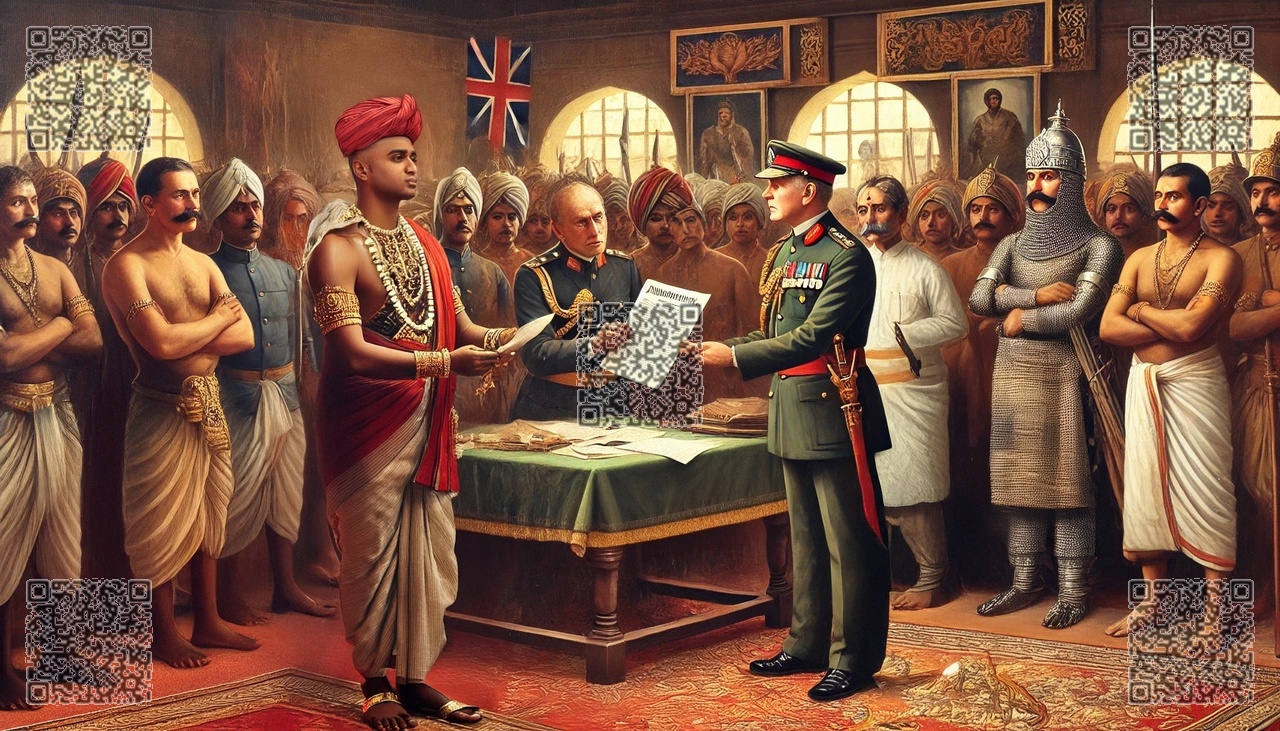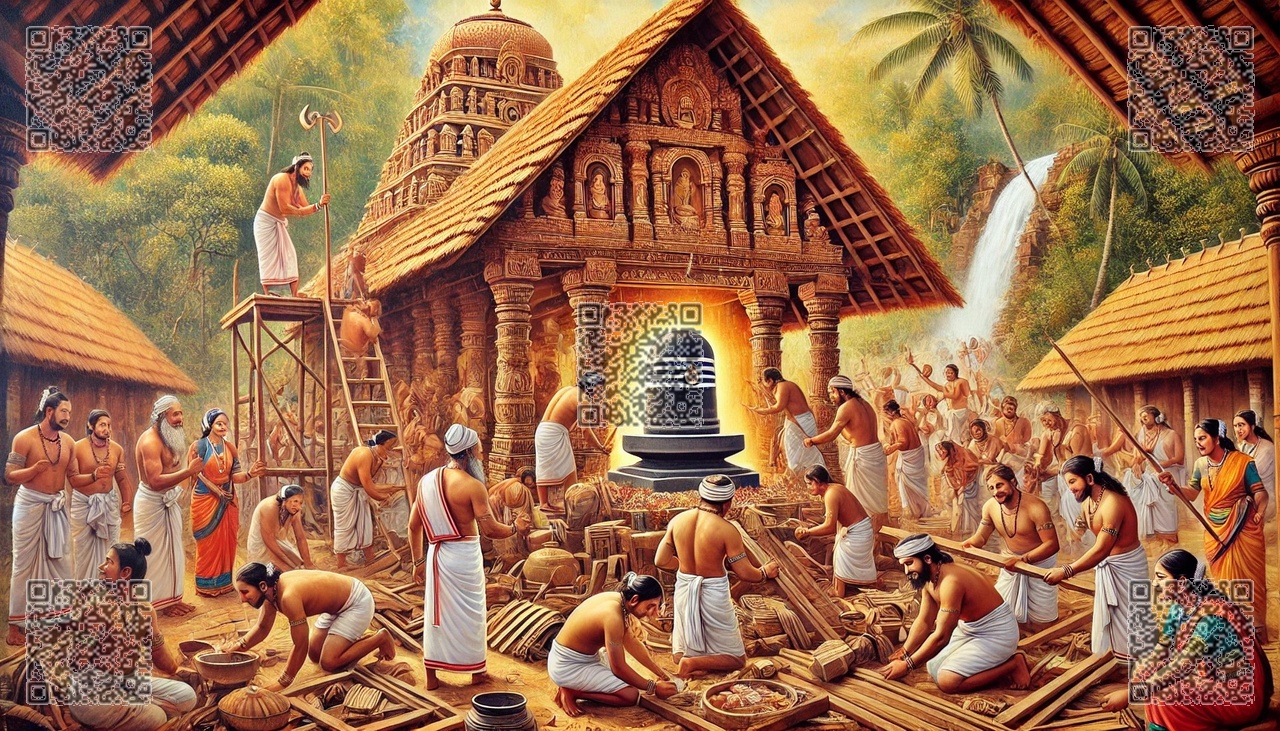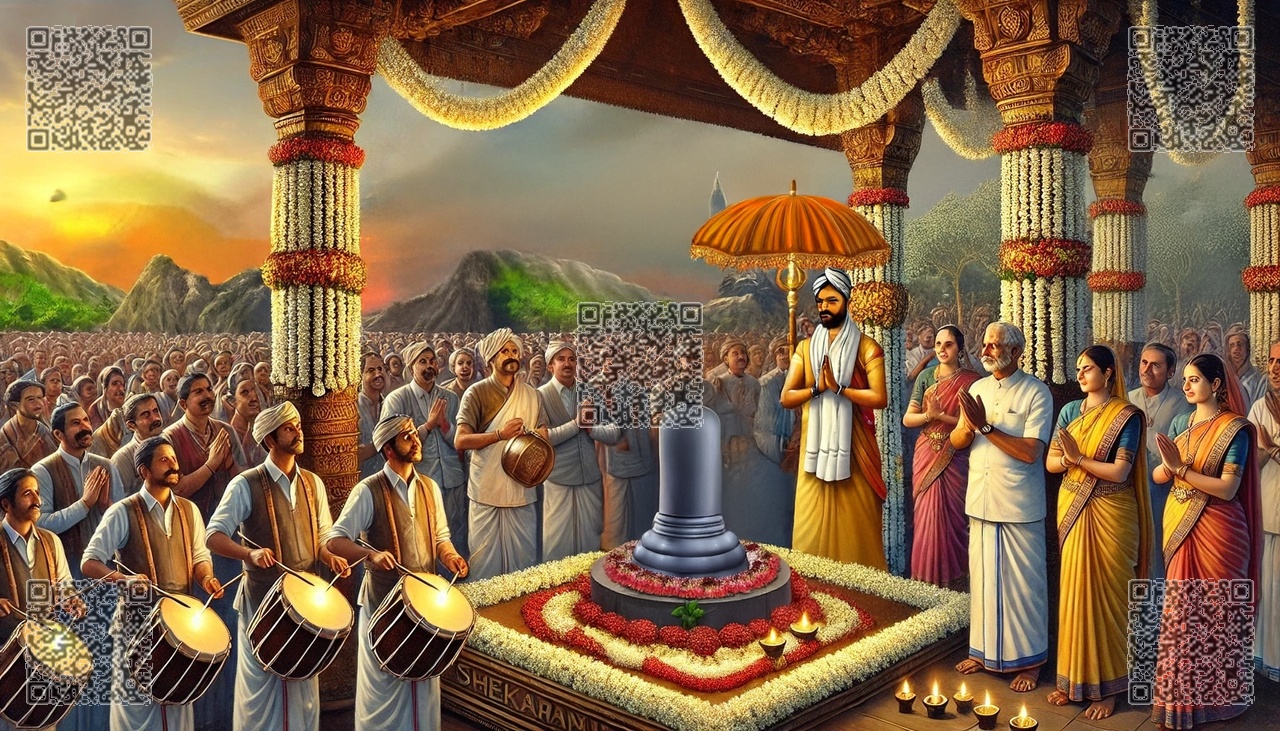(A Short Story Inspired by an Anecdote from Shekharan Channar’s Life)
A balmy dusk settled over Muttath as the sun dipped low behind coconut fronds, painting the sky in shades of gold and vermilion. In that twilight glow, the once-renowned Thekkedath Kalari—an old martial arts hall—lay abandoned, its legacy buried beneath layers of dust and cobwebs. Crooked wooden beams jutted out from the crumbling structure, and loose roof thatching flapped in the evening breeze. Only the distant call of a nightjar broke the heavy silence.

For centuries, Thekkedath Kalari had been a formidable center of Kalaripayattu training, a place where warriors honed their skills under the expert guidance of the Alummoottil family. But the British, wary of its influence, had deemed it a threat. Fearing that the Alummoottil warriors could raise an army to aid the Travancore kingdom in breaking free from British control, the colonial rulers banned the kalari. Under pressure, the Travancore government was forced to order the closure of all martial schools run by the family. With their hands tied by the decree, the once-proud training ground of Thekkedath fell into disuse, a casualty of foreign dominion.

That evening, Shekharan Channar arrived in a sturdy bullock cart, accompanied by two aides and a respected local priest. The villagers, knowing his wisdom and influence, had sought his counsel. They wished for him to find a new purpose for the dilapidated structure, one that could honor its past while ensuring its survival.

Stepping over the cracked threshold, Shekharan surveyed the interior by the flickering light of oil lanterns. Amid broken practice weapons and rotting pillars, one could almost hear echoes of the fierce lessons once held there. His brows furrowed in thought. Restoring it as a kalari was out of the question—the British would never allow it. But its spirit could live on in another form.

“This hall can be reborn,” he announced to the priest, his voice carrying through the empty space. “Not as a place of war, but as a place of worship—a temple dedicated to Shiva. Let Thekkedath Kalari become Thekkedath Temple.”
Word of Shekharan’s decision spread quickly. With the family unable to run it as a martial school, transforming it into a temple was both a necessity and an act of defiance. The place that once prepared warriors for battle would now guide souls toward devotion, ensuring that the legacy of Thekkedath endured in a new form.
In the weeks that followed, laborers arrived at dawn, carefully dismantling the crumbling rafters and clearing out splintered wooden posts. Women from nearby households brought pots of cool rice gruel to sustain the workers, while children peeked through gaps in the fence, marveling at the transformation. Local carpenters reinforced the walls, laid a new stone floor, and replaced the ragged thatch with sturdy wooden shingles. Craftsmen were hired to carve ornate wooden doors, marking the entrance to what would soon be a sacred sanctuary. Meanwhile, the priest oversaw the spiritual aspects, declaring that a Shiva lingam should be consecrated at the temple’s heart.
Slowly but surely, Thekkedath’s new identity took shape. Gone were the training dummies and sword racks; in their place rose a gleaming sanctum, adorned with fresh jasmine garlands and brass lamps. Dawn after dawn, villagers arrived to lend their hands—some sweeping debris, others painting the outer walls in hues of white and ochre. Everyone seemed inspired by the transformation, knowing that their past, though altered, would not be erased.
Finally, the day of consecration arrived. Lanterns hung from newly polished wooden beams. Drummers played a rhythmic cadence—not for warriors marching to mock battles, but for devotees stepping toward prayer. A solemn hush fell as the priest performed sacred rites, his chants reverberating in the old rafters of Thekkedath Kalari, now reborn as a temple. In a final, symbolic gesture, Shekharan lit the temple’s inaugural lamp, its golden glow casting away the shadows of colonial suppression and illuminating a new path for the community.
As the ceremony concluded, villagers poured in to witness the rebirth of their once-proud kalari. Some of the older residents wiped away tears, remembering the days when warriors trained on those same stone floors. The younger ones, unaware of the struggles that had preceded this day, stood in awe of the shining lamp, the cool stone beneath their feet, and the soothing aroma of incense curling into the air.
Shekharan gazed at the worshippers filling the sacred space. Their quiet smiles and folded hands spoke of gratitude—not only for the past but for the future. Where once warlike shouts had echoed, now rose communal prayers in unison.
In the weeks ahead, Thekkedath Temple became the heart of the community. Families gathered to offer prayers, travelers sought solace within its walls, and a sense of unity spread throughout Muttath. People whispered with admiration that Shekharan Channar had not merely restored a crumbling structure—he had ensured that its spirit, its history, and its purpose lived on. The kalari had been silenced by foreign rule, but its essence remained, transformed into something eternal.
And so, where once an ancient training ground stood, the Thekkedath family temple now flourished—a testament to resilience, faith, and the unyielding will to preserve one’s heritage, even in the face of oppression.



